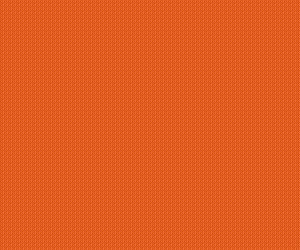-
 Home
Home
-
 News
News
-
 Colleges
Colleges
Pakistan's Largest Database of Colleges and Universities
Explore Largest Directory of Private and Govt. Colleges, Universities and find best institute for your future Education.
-
 Courses
Courses
-
 Admission
Admission
-
 Lectures
Lectures
-
 Online Test
Online Test
Short Question
- 9th Class Physics Short Questions
- 9th Class Chemistry Short Questions
- 9th Class Math Short Questions
- 9th Class Biology Short Questions
- 9th Class Computer Short Questions
- 9th Class English Short Questions
- 10th Class Physics Short Question
- 10th Class Chemistry Short Question
- 10th Class Math Short Question
- 10th Class Biology Short Question
- 10th Class Computer Short Question
- 10th Class English Short Question
-
 Past Papers
Past Papers
-
 Date Sheets
Date Sheets
-
 Results
Results
Exam Results 2024
Check online Results 2024 Matric Inter BA BSc B.Com MA MSc M.Com CSS PCS MCAT ECAT of all educational boards and universities in Pakistan
-
 Study Abroad
Study Abroad
Study Abroad Programs and Opportunities for Pakistani Students
Explore free study abroad search to find programs, consultants, events to study in USA, UK, Australia, China, Malaysia and many others.
-
 Jobs
Jobs
-
 Tutors
Tutors
-
 More
More
-
 Apps
Apps
7th Computer Science Chapter 3 Test
Computer Science 7th Class Chapter 3 Online Test
Try the Computer Science 7th Class Chapter 3 Online Test.
-
Total Questions10
-
Time Allowed10
Question # 1
What is the efficiency of a solution based on in terms of the given paremeters.
Question # 2
Which symbol represents the start or stop point in a flowcart.
Question # 3
Which symbol represents a process in a flochart.
Question # 4
Which tpe of algorithm goes through all possible solutions untill the required solution is found?
Question # 5
What is the purpose of the "Mod"% in programming.
Question # 6
Which step involves breaking down complex prblems into smaller parts.
Question # 7
Whicht feature in Scratch is used for infinite loops in which an object wil repeat its action forever.
Question # 8
What is the tpe of algorithm that uses a random numebr to decide the expected outcome.
Question # 9
Discover the principles that caue the patterns of a problem is called.
Question # 10
What are the prerequisites for writing an algorithm
Here you can prepare 7th Computer Science Chapter 3 Test. Click the button for 7th Computer Science Chapter 3 100% free full practice test.
Top Scorers of Computer Science 7th Class Chapter 3 Online Test
-
M Muhammad Hashir 11 - Mar - 2023 00 Min 51 Sec 20/20 -
A Abdullah Hamid 3576 11 - Mar - 2023 01 Min 12 Sec 20/20 -
A Abdul Hanan 08 - Feb - 2023 02 Min 14 Sec 20/20 -
U Usman Farooq class 5th-A10 17 - Dec - 2024 02 Min 22 Sec 20/20 -
S Samiya 08 - Feb - 2023 00 Min 47 Sec 18/20 -
M Maryam 26 - Sep - 2022 01 Min 34 Sec 18/20 -
M Mohsin Kamboh 08 - Feb - 2023 01 Min 57 Sec 18/20 -
S Sultan Mahmod 11 - Feb - 2023 02 Min 27 Sec 18/20 -
M Mubashar Ali 29 - Nov - 2022 02 Min 36 Sec 18/20 -
S sabita ahsan 08 - Feb - 2023 02 Min 58 Sec 18/20 -
S Sultan Mahmod 11 - Feb - 2023 03 Min 47 Sec 18/20 -
S Samiya 08 - Feb - 2023 00 Min 57 Sec 16/20 -
M Muhammad Hashir 10 - Mar - 2023 01 Min 12 Sec 16/20 -
N NetFlix PAKISTAN 20 - Feb - 2023 01 Min 18 Sec 16/20 -
R Rais Shakeel 16 - Feb - 2023 01 Min 20 Sec 16/20

.gif)
















.png)

